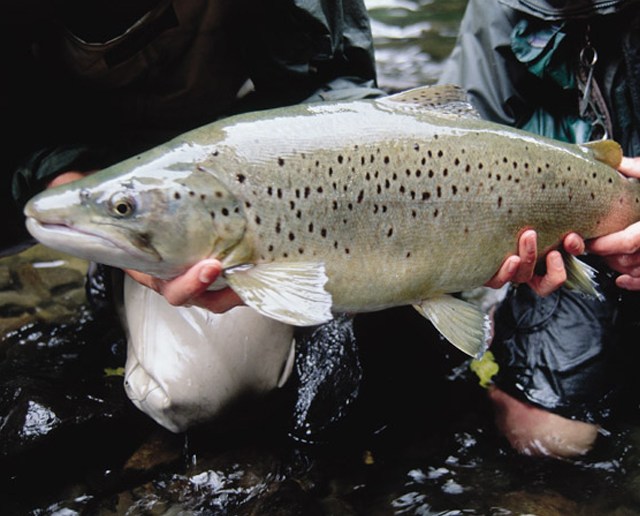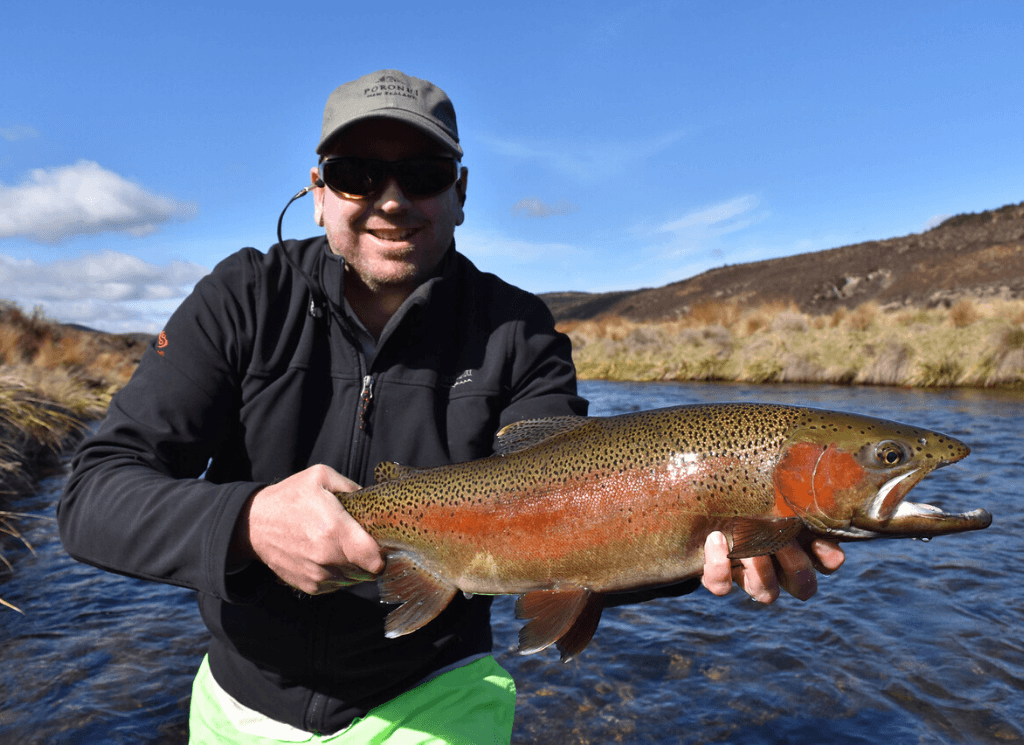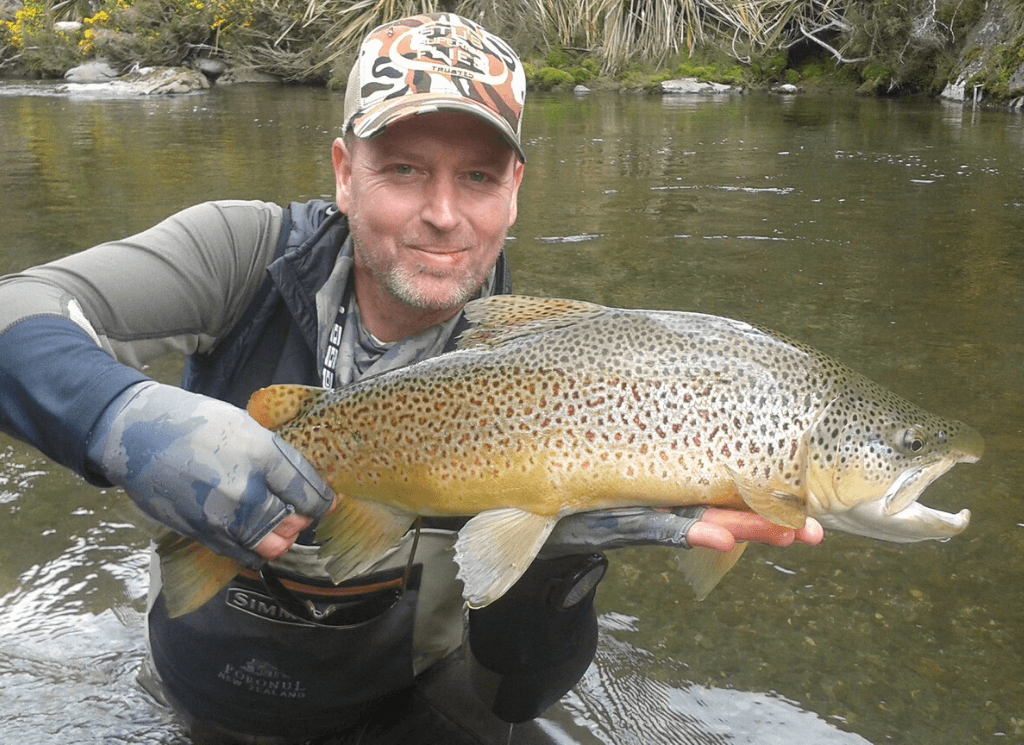


About, Fly Fishing
05 August 2012
A lot of confusion exists over the establishment of trout in the North Island of New Zealand, especially brown trout. What we do know is that several attempts were made to bring trout here from the UK — most of which failed. However, it appears the first successful shipment was the second generation of ova stripped from the English chalk streams, the Itchen and the Wye.
The ova were packed on top of moss and then surrounded by huge blocks of ice for shipment to hatcheries in Tasmania. Several attempts were made before finally a shipment — with about 30% of the ova surviving — was landed. These eggs were hatched out and then raised to maturity, at which point they were subsequently stripped of their ova and this was fertilized and transported to New Zealand to the Wellington Acclimatization Society’s hatchery in Masterton. This hatchery still exists today and is used to raise rainbow trout as a project for the local intermediate school.
Liberations into the Taharua
Exact details on where the liberations were made from are sketchy, but it appears the first liberations into our district would have been in the late 1870s. Records only ever note one release of trout into the Taharua in about 1878. This was said to have taken place at the very top of the stream — most likely in the vicinity of the first bridge that crosses it on Taharua Road.
Because there are no records of other fish ever being released into the Taharua, it’s a commonly held belief that the trout stocks contained within it are possibly the purest genetic strain of chalk stream trout left in the world. The English streams have been overstocked and re-stocked for years, and today the trout within are little more than a domestic strain gone wild. I, personally, often wonder if the distinct coloration of the Taharua fish lends itself to the environment (lots of light-colored sandy bottoms producing silvery trout) or genetics. Certainly, if you look at photographs of the old English fish, they look a lot like Taharua fish.

Liberations into the Mohaka
The Mohaka fish have a more diverse history. No doubt the first Mohaka liberation would have been at the same time as the Taharua, given that the transportation routes are obviously the same, but subsequently countless liberations have been made from various sources and importations. It would be virtually impossible to trace the genetic background of the fish given the size of the river and its catchments. Also, as tagged trout from other river systems have been caught in the Mohaka, even internal genetic displacement could have had some effect. Though with the range and amount of spawning habitat throughout the system, it is unlikely anything could affect the stocks as they are now.
Dispelling the myths
One myth that should be displaced here was popularized by Kiwi mythology. When people talk about ‘German Browns’ in relation to New Zealand, they are talking nonsense. There is no such thing here. The name German Brown is an American one, and no stocks of Browns were ever brought here from the North American continent. The Americans coined the phrase, and to this day many people in the US believe their brown trout came from Germany. The reality is that, initially, their stocks came from the UK — Ireland in fact. The term ‘German Brown’ originated because the person who imported them, Mr Maher, was German. The fish never were.
The other phrase you will commonly hear is ʻLoch Leven’ brown. This is also a myth. It is usually used in relation to the golden-sided orange-spotted brown trout. Certainly, some ova was brought to New Zealand from Loch Leven. However, nothing indicates any of it ever made it into the Taharua. By the time Loch Leven trout were introduced to this country, the established stock was such that it is doubtful any of them could have had any great effect on the genetic makeup of the future stocks. After the passage of over 120 years, it is even less likely now. Studies have shown that in most cases the coloration of brown trout is habitat-dependent, and if you take fish from the same red and expose them to different environments they both color differently. A trout in the Kaipo sitting on top of brown rocks is going to be darker and heavily spotted. A fish sitting on a pumice bar in the Kaipo may be silvery. It basically has nothing to do with genetics.
So forget the terms ‘German Brown’ and ‘Lock Leven’ brown – there is no such thing.

The rest of the rivers fit the same category as the Mohaka, and with so many liberations it is impossible to trace the exact origins of the fish. But there are a couple of myths you can dispel. No rainbows came from the ‘Russian River’ either, as far as it is recorded. They actually came from the McLeod and Sonoma Creek. But in reality, so many introductions came after this that it’s a pretty mixed up mess. I would just say that we know they came from California. And a lot were steelhead.
The main book I refer to for this information is Gamekeepers of the Nation by Robert McDowell. The lodge has a copy that I have in my possession. If anyone wants to look at it, please let me know. What’s written above is from memory so I wouldn’t publish this as the last word on the subject, best the details be checked against the book.
© Clark Reid, 2004-05-24, but reproducible in any form suitable, even loo paper.
Want to ask a question about Poronui, personalise your vacation with bespoke itinerary options or find out about available dates?
Simply fill in your name and contact email address with a short message and we will get back to you.